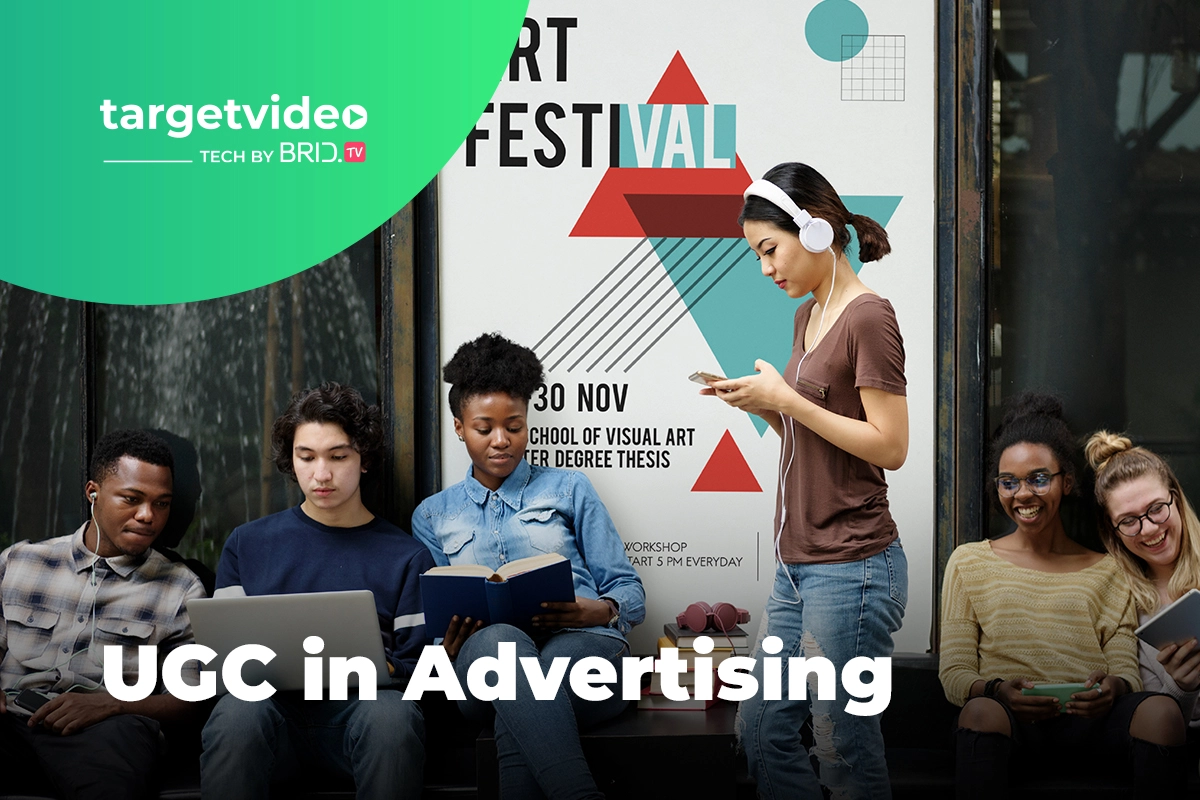User-generated content has gained rapid popularity in the digital sphere, with both publishers and advertisers looking for ways to capitalize on this industry trend. However, finding quality UGC and implementing it into advertising strategies is easier said than done. To prompt advertisers to use UGC effectively in their campaigns, we decided to showcase why and how user-generated content advertising can be successful.
What Makes UGC Effective?
As consumers increasingly reject intrusive ads, UGC has emerged as an effective, organic, and less intrusive marketing strategy. One of the main reasons why UGC is inherently seen as more trustworthy by consumers is its authenticity. In fact, 86% of consumers said authenticity is important when deciding what brands they like and support. This means that online users prefer recommendations from other consumers, real people, rather than bland promotional content from brands themselves.

Follow TargetVideo on LinkedIn to stay up-to-date with the latest developments in the industry!
Follow UsHow to Get UGC
You may already have a potential landmine of UGC just sitting on your brand’s social media accounts or website (i.e., reviews, testimonials, comments, etc.). However, if you want to prompt consumers to create a certain type of UGC that fits your campaign, you can encourage audiences to participate by making your product or service more share-worthy.
One of the best examples of this was Coca-Cola’s “Share a Coke” campaign. This campaign personalized Coca-Cola bottles with famous names and allowed audiences to make custom name designs at promotional events. “Share a Coke” generated significant engagement and gave the company a great source of UGC promotional materials, as audiences were taking pictures with their custom designs and sharing them on social media with appropriate hashtags.
How to Use UGC
There are many ways in which brands can utilize user-generated content in advertising. One of the most common practices would be product testimonials. Featuring testimonials on your brand’s website, more precisely product or landing page, can influence potential consumers as customer experiences add credibility to your product.
In addition, sharing customer-curated UGC on social media (e.g., reviews, pictures, video content featuring your products, etc.,) is also a practical way to extend your reach. For instance, for the promotion of the second season of Stranger Things, Netflix encouraged fans to share their own themed content, art, and experiences related to the series, creating a viral buzz around the release.
Incorporating UGC in Advertising Campaigns
One of the most beneficial uses of UGC is incorporating it directly into your advertising campaign, more precisely your creatives. What this means is that your brand’s promotional content will include UGC – user photos, videos, and quotes. For instance, many hotel brands like J.W. Marriott use their TripAdvisor ratings and top testimonials in their in-banner ads when advertising on travel industry websites.
Another great approach would be to create ads that are entirely centered around the user’s experience, for example, using compilations of satisfied customer reviews in your video ads, as it has been proven to boost CTA and conversion rates.
You Might Also Like: 8 Tips for Making an Effective Video Ad
Benefits
As mentioned, authenticity is the biggest selling point for UGC as it fosters consumer trust. However, it’s not the only benefit advertisers can expect to see. The following are some key advantages of using UGC in advertising:
- Engagement Boosting – When consumers become active participants in the brand narrative through UGC, the content receives higher interactions (e.g., likes, shares, comments, etc.);
- Cost-Effectiveness – UGC is created by the audience rather than expensive production teams and is usually free;
- Brand Loyalty – When users see their content featured in advertising campaigns, it creates a sense of validation and recognition, leading to a positive perception of the brand;
- Consumer Insight – While weeding out quality UGC can be tiresome, this process provides valuable insights into consumer preferences, behaviors, and perceptions.
Best Practices
Here are a few things to note when using UGC in your campaigns:
- Ask for permission and give credit – always ask for permission and credit the original creator. Unless they posted it in your app or on your website, for instance, where you clearly stated that you will be using what they post on your social media platforms;
- Avoid influencer marketing – UGC and influencer marketing are often mistaken as synonyms. However, this is not the case, influencer marketing involves influencers promoting a certain product for a price, while UGC advertising is much more honest and organic. So, don’t be tempted to pay for influencer-made UGC;
- Don’t fake organic UGC – avoid using artificially created content that mimics user-generated material. Audiences can quickly discern between genuine and staged content;
- Approach it as any other campaign – treat your UGC campaign with the same level of strategic planning and consideration as any other marketing initiative. Set clear objectives, define your target audience, and craft a compelling narrative.
TargetVideo’s Advertising Solution
Make sure that your ads reach the right audience even in a cookieless environment with TargetVideo’s advertising solution. Be worry-free, use our original brand-safe video content, and gain access to our network of premium publishers that offer high-quality ad inventory in brand-safe editorial environments. Let TargetVideo streamline your advertising campaign.

